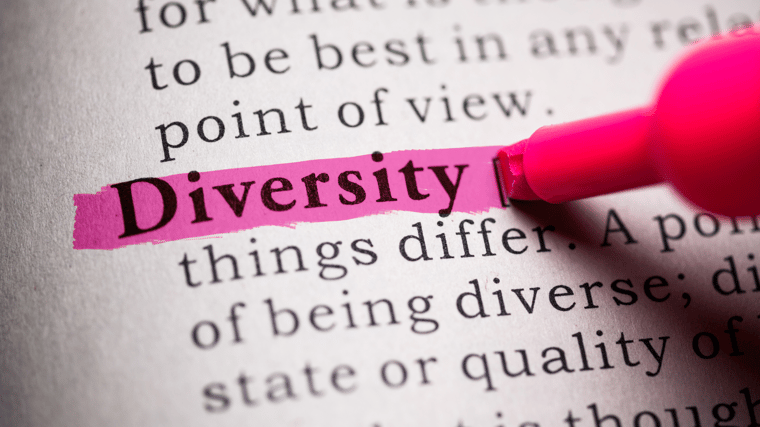Right now, we live in a wonderfully diverse world – filled with options and choices. A world where you can get M&Ms in every color, jellybeans in any flavor, and an ice cream store that allows you to choose from 31 flavors. (Over the years, they’ve had over 1,400 flavors on their menu.) We also live in a world where the people we work with and encounter daily have unique traits, attributes, and experiences that equally run the gamut.
When it comes to Diversity, Equity, and Inclusion (DEI) in the workplace, there is so much to address it can often feel overwhelming, making the idea of having a one-size-fits-all solution to DEI learning seem ideal. It’s human nature to want to simplify a topic so complex. Unfortunately, that’s not how this conversation works, considering the varied personal experiences, skillsets, and cognitive diversity at work. This variance means how organizations choose to move forward in addressing and discussing DEI must be intentional if we are committed to creating respectful and considerate workspaces where each employee feels valued.
For decades, DEI programming and training have been presented in a unilateral approach: one way, one conversation, one delivery style, and a one-size-fits-all application. This approach does not support a learning experience involving multifaceted, personal, and emotional discussions that address myriads of thoughts, ideas, and experiences. It is not surprising that disconnect and malaise have slowly turned into fatigue. Vince Lombardi said it best, “fatigue makes cowards of us all.” We cannot afford to have cowardice on such a critical topic. We must take the reins of this conversation to ensure it involves everyone and encourages thoughtful debate, engagement, and resolutions – not more division and polarization.
So how do we solve this dilemma? It’s certainly not by over-generalizing or simplifying an incredibly complicated topic. But that doesn’t mean we should make it even more complex. We begin by breaking it down. We do not dismiss or ignore any aspect of it, but we start by understanding that it’s a great deal to grasp, and just like learning a new computer program or a new language, we must get down to the basics.
The basics begin by understanding that there is no “one way” to have this conversation. Just as students have varying learning styles in school, we have different learning styles when broached with DEI at work. An equally important point to consider is that not everyone is in the same place on their DEI journey. While some employees are well versed in this critical conversation, for some, this is their first time hearing or joining this conversation. With all these considerations in mind, here are five things leaders can start doing today to make workplace conversations around DEI more effective and inclusive:
Meet people where they are. This meeting can occur by implementing a few techniques, all requiring setting the ego aside. This means:
- Go into discussions without a pre-determined outcome, based solely on your input and actions.
- Relinquish judgment when it comes to someone else’s experience or lack thereof.
- Set the intention for the end goal to be a deeper understanding of how thoughtful DEI application makes for a more conducive work environment rather than simply “changing someone’s mind.”
Open lines of healthy communication. Healthy is the operative word here. It means there is not just one person speaking and someone else listening – that’s a lecture. Instead, aim for exchanging words and ideas without fear of judgment or repercussion – that’s a dialogue.
Be receptive and courageous. These are not the most comfortable conversations to have. Many times, we are looking not just at society but taking an inward look at ourselves and how we show up. That can be uncomfortable. But that discomfort is remedied by the fact that it’s temporary and that there are rewards if people are open and receptive to learning something new. This juncture is where courage comes into play. Human nature has us programmed to want to be proven right. It takes courage to identify a common flaw, move past it, and be willing to hear someone else’s thoughts, ideas, and experiences. (Especially if they are so far from our realm of comprehension.)
Don’t expect instant results or buy-in. Building inclusive cultures is a process; treat it as such. Many people are shy around DEI, especially if they’ve been going to DEI training throughout their professional careers and haven’t seen much positive change or even witnessed worsening scenarios. While many have had positive experiences, many have not. For those in the latter category, buy-in for “more programming” may take some serious effort. But with the right approach, more and more people will be inclined to participate in thoughtful learning opportunities not based on the old paradigms of victim vs. villain. Reframing these learning moments gives people equal agency and voice in the conversation.
Redefine Diversity. Yes, diversity is about the things we see and perceive – our ethnicity, abilities, gender, nationality, and all the intricacies that make us unique. But there is more to it than that; there’s more to workplaces being inclusive and celebrating that diversity. We are at a pivotal time where we can consciously expand the idea of true diversity to include the diversity of thought and ideas. This expansion is paramount if we want to bring every organization into this culture of inclusion.
We are not monoliths; we are not the labels given to us by others or the ones we’ve given ourselves. Stepping out of that inconsiderate and insulting paradigm takes us one step closer to creating spaces of belonging based not on the tangible things that make us diverse but based on all of the things that make us wonderfully diverse.
We must acknowledge that this is a DEI journey, not a destination. This journey is a living, ongoing conversation. It is as ever-evolving as we are. As long as we are willing to learn, be open to new ideas and concepts, and always be considerate of each other, we will be on the right track to creating workplaces where people feel like they belong and, just as critical, want others to feel like they belong as well.




